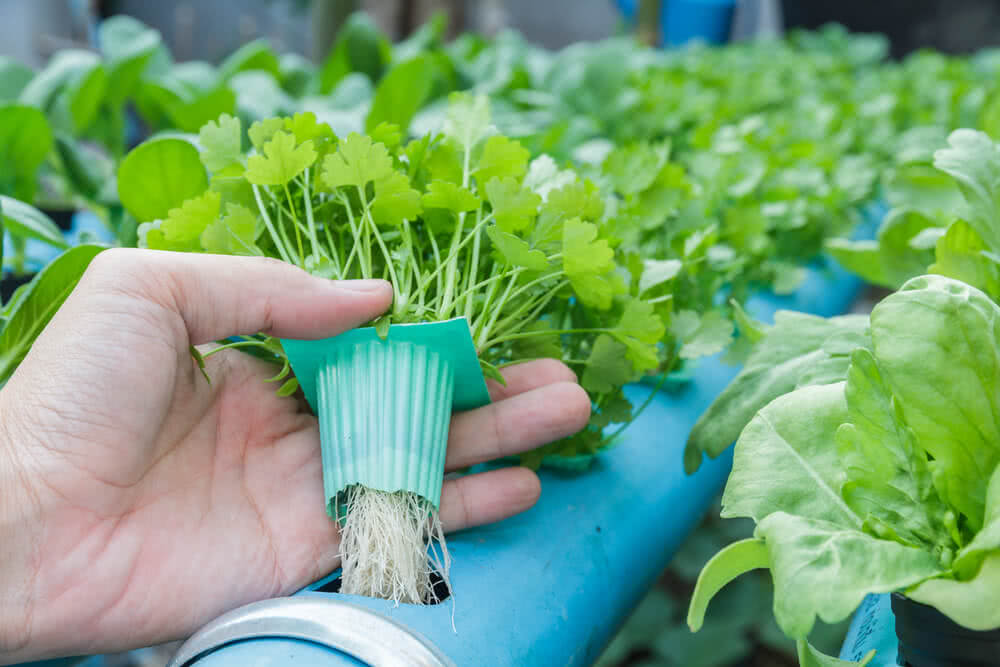Apart from The Dumb Cane, the decorative plant is also known as the mother-in-law tongue (i.e., the common name used for Sansevieria). This is because, the plant has a toxic sap with calcium oxalate crystals, which once ingested causes tongue and throat inflammation leading to temporary inability to speak.
Dieffenbachia or the “dumb cane plant” varieties range from small dwarf types to the large dark green mottled foliage. This plant can thrive for years indoors and reach up to 4 to 5 feet as an attractive floor plant.

Dieffenbachia Plant Lighting and Temperatures:
Dieffenbachia thrives well indoors, with room temperatures ranging from 65-75 degrees. It cannot tolerate temperatures below 60 degrees. The plant likes optimum light but cannot handle full sun; though it does well when grown under artificial lighting. Read about how light affects the growth of plants.
Watering and Feeding Dieffenbachia Plant:
Dieffenbachia belongs to the Araceae family. It likes humidity and lots of water during summer. You need to keep the soil moist, not wet. Remember to reduce watering during winter. March to October – feed the plant with a slow-release fertilizer every other week. During winter avoid using plant food and water only.
Material Required For Dieffenbachia Plant Care:
- Potting Mix- Gardenia Pot-o-mix
- Neem Oil Plant Insecticide
- Spray Bottle for Insecticide
- Watering Can
- Pruners
Soil, Potting, and Transplanting:
The Dieffenbachia plant prefers well-draining soil. Use 2 part peat moss and 1 part perlite. Choose the pot diameter according to the size of the plant. Pot or repot, during springtime. Read about how to re-pot old plants?
Propagating Dieffenbachia Plant:
Propagate your Dieffenbachia when it gets too big and becomes leggy.
1. Top shoots
When plants become big and leggy the stems become “naked, ” and the plant resembles a bunch of stems with foliage at the top. Cut off the top shoot, and place the cutting in moist, well-drained soil. Apart from this, you can also propagate by air layering.2. Stem Cuttings
Do you know that the stems or canes of Dieffenbachia root as well? Stems should have an “eye” from which new leaves and stems will emerge. Place about 1/2 the stem buried in the soil with the “eye” upwards. The rooting process will speed up if it is done in a small bottle planter. Roots will start forming in about 2-4 weeks. The temperatures should be in a range of 72-degree.
Pest and Problems:
Spider Mites, Mealybugs, and Aphids: Red spider mites can show up on the undersides of dieffenbachia leaves in hot and dry conditions. Mealybugs and aphids can also be a threat as they suck juices from the plant. Read about how to get rid of mealy bugs.
Our Recommendations of insecticides and pesticides
- Use Neem oil for plants to control pest infestation
- Diatomaceous Earth - Food Grade - More on using DE here
- Insecticidal soap
- Tafgor
Dieffenbachia Varieties
- Dieffenbachia Starbright
- Dieffenbachia Amoena Tropic Snow
- Dieffenbachia Camilla
- Dieffenbachia Compacta
- Dieffenbachia Maculata
- Dieffenbachia Mary
- Dieffenbachia Sparkles
- Dieffenbachia Tropic Marianne

Warning: Dieffenbachia Plant is Poisonous
- Dieffenbachia leaves and stems are poisonous if consumed. Thus, wear gloves to handle the plant.
- Keep these plants out of the reach of children and pets.
- Do not let your pet chew on its leaves.
- Avoid the sap to come in contact with your eyes or mouth.
















